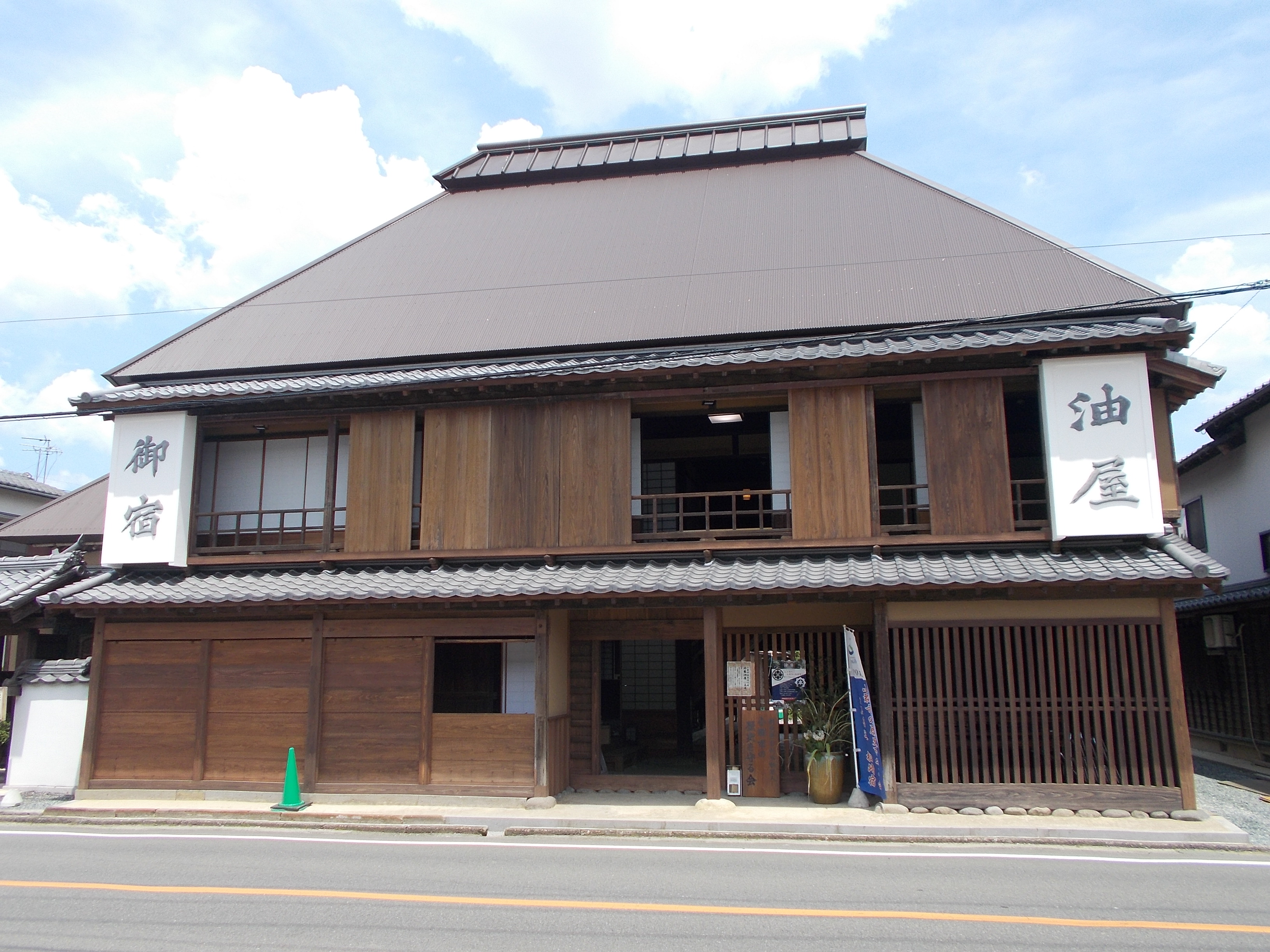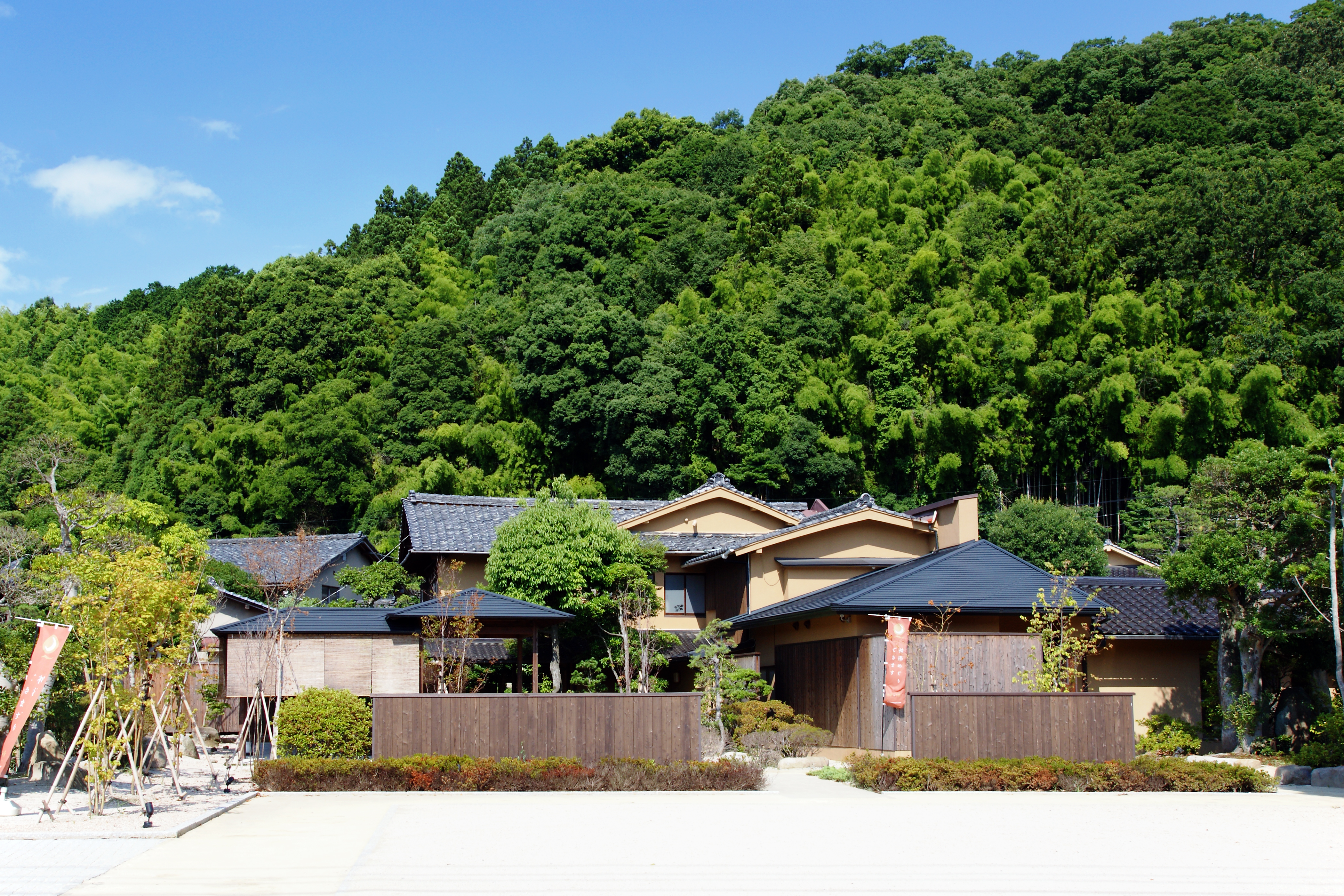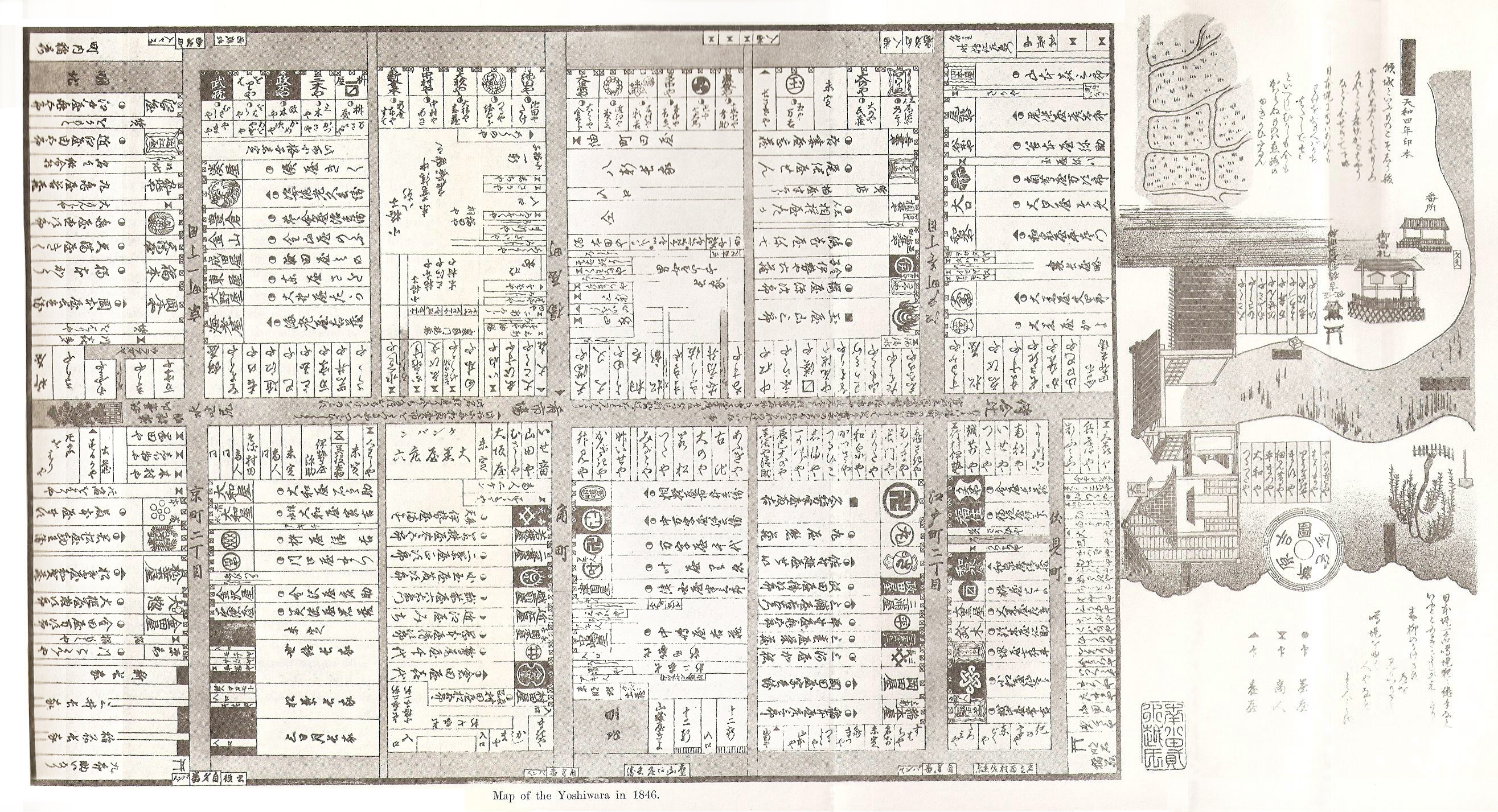|
Meshimori Onna
or , literally "meal-serving woman", is the Japanese term for the women who were hired by ''hatago'' inns at the ''shukuba'' (post stations) along ''kaidō'' routes in Japan during the Edo era. They were originally maidservants hired by the inns, although as traffic along the ''kaidō'' grew and competition between the inns increased, they were often engaged in prostitution. Many inns had prostitutes in order to attract a larger number of travellers. In 1718, the Tokugawa shogunate issued a law limiting the number of ''meshimori onna'' to two per inn, giving the inns tacit permission to employ a limited number of prostitutes. See also *Nakai (Japanese vocation) A is a woman who serves as a waitress at a '' ryokan'' or Japanese inn. References Further ...
|
Hatago
were Edo period lodgings for travelers at ''shukuba'' (post stations) along the national highways, including the Edo Five Routes and the subroutes. In addition to a place to rest, ''hatago'' also offered meals and other foods to the travelers. They were also called . Name origin ''Hatago'' means "traveling basket." The word itself originally derived from baskets that contained food for horses and were carried by travelers. From there, it became a tool with which travelers were carry their own food and goods. Shops that began preparing and selling food for travelers gained the suffix , meaning "shop," but this was eventually shortened to just ''hatago''. Preserved ''hatago'' Because many post stations along the Tōkaidō, Nakasendō The , also called the ,Richard Lane, ''Images from the Floating World'' (1978) Chartwell, Secaucus ; pg. 285 was one of the centrally administered Edo Five Routes, five routes of the Edo period, and one of the two that connected the ''de facto'' ... [...More Info...] [...Related Items...] OR: [Wikipedia] [Google] [Baidu] |
Shukuba
were Stage station, staging post stations during the Edo period in Japan, generally located on one of the Edo Five Routes or one of its sub-routes. They were also called ''shuku-eki'' (宿駅). These stage stations, or "" developed around them, were places where travelers could rest on their journey around the nation. They were created based on policies for the transportation of goods by horseback that were developed during the Nara period, Nara and Heian period, Heian periods. History These stations were first established by Tokugawa Ieyasu shortly after the end of the Battle of Sekigahara. The first stations were developed along the Tōkaidō (road), Tōkaidō (followed by stations on the Nakasendō and other routes). In 1601, the first of the Tōkaidō's 53 Stations of the Tōkaidō, fifty-three stations were developed, stretching from Shinagawa-juku in Edo to Ōtsu-juku in Ōmi Province. Not all the post stations were built at the same time, however, as the last one was bui ... [...More Info...] [...Related Items...] OR: [Wikipedia] [Google] [Baidu] |
Kaidō
were roads in Japan dating from the Edo period. They played important roles in transportation like the Appian Way of ancient Roman roads. Major examples include the Edo Five Routes, all of which started at Edo (modern-day Tokyo). Minor examples include sub-routes such as the Hokuriku Kaidō and the Nagasaki Kaidō. ''Kaidō'', however, do ''not'' include San'yōdō, San'indō, Nankaidō and Saikaidō, which were part of the even more ancient system of Yamato government called Gokishichidō. These names were used for administrative units, and the roads within these units. Many highways and railway lines in modern Japan follow the ancient routes and carry the same names. The early roads radiated from the capital at Nara or Kyoto. Later, Edo was the reference, and even today Japan reckons directions and measures distances along its highways from Nihonbashi in Chūō, Tokyo. Gokaidō The five main ''kaidō'' from Nihonbashi in Edo were: * Tōkaidō (東海道) to Kyoto ... [...More Info...] [...Related Items...] OR: [Wikipedia] [Google] [Baidu] |
Edo Era
The , also known as the , is the period between 1600 or 1603 and 1868 in the history of Japan, when the country was under the rule of the Tokugawa shogunate and some 300 regional ''daimyo'', or feudal lords. Emerging from the chaos of the Sengoku period, the Edo period was characterized by prolonged peace and stability, urbanization and economic growth, strict social order, isolationist foreign policies, and popular enjoyment of arts and culture. In 1600, Tokugawa Ieyasu prevailed at the Battle of Sekigahara and established hegemony over most of Japan, and in 1603 was given the title ''shogun'' by Emperor Go-Yōzei. Ieyasu resigned two years later in favor of his son Hidetada, but maintained power, and defeated the primary rival to his authority, Toyotomi Hideyori, at the Siege of Osaka in 1615 before his death the next year. Peace generally prevailed from this point on, making samurai largely redundant. Tokugawa shoguns continued Ieyasu's policies of conformity, including a for ... [...More Info...] [...Related Items...] OR: [Wikipedia] [Google] [Baidu] |
Prostitution In Japan
Prostitution in Japan has existed throughout the country's history. While the Prostitution Prevention Law of 1956 states that "No person may either do prostitution or become the customer of it", loopholes, liberal interpretations and a loose enforcement of the law have allowed the Japanese sex industry to prosper and earn an estimated 2.3 trillion yen ($24 billion) per year. Sex trade and sex services may be referred to as , which also means "manners", "customs" or "public morals". Since Japanese law defines prostitution as "intercourse with an unspecified person in exchange for payment", most services offer specifically non-coital services, such as conversation, dancing or bathing, sometimes accompanied by sexual acts that legally are not defined as "intercourse", in order to remain legal. History From the 15th century, Chinese, Koreans, and other East Asian visitors frequented brothels in Japan. This practice later continued among visitors from "the Western regions", ... [...More Info...] [...Related Items...] OR: [Wikipedia] [Google] [Baidu] |
Tokugawa Shogunate
The Tokugawa shogunate, also known as the was the military government of Japan during the Edo period from 1603 to 1868. The Tokugawa shogunate was established by Tokugawa Ieyasu after victory at the Battle of Sekigahara, ending the civil wars of the Sengoku period following the collapse of the Ashikaga shogunate. Ieyasu became the ''shōgun,'' and the Tokugawa clan governed Japan from Edo Castle in the eastern city of Edo (Tokyo), Edo (Tokyo) along with the ''daimyō'' lords of the ''samurai'' class. The Tokugawa shogunate organized Japanese society under the strict Edo society, Tokugawa class system and banned most foreigners under the isolationist policies of ''Sakoku'' to promote political stability. The Tokugawa shoguns governed Japan in a feudal system, with each ''daimyō'' administering a ''Han system, han'' (feudal domain), although the country was still nominally organized as provinces of Japan, imperial provinces. Under the Tokugawa shogunate, Japan experienced rapid ... [...More Info...] [...Related Items...] OR: [Wikipedia] [Google] [Baidu] |
Nakai (Japanese Vocation)
A is a woman who serves as a waitress at a '' ryokan'' or Japanese inn. Originally written as (meaning "in the house" in Japanese), which meant the anteroom in a mansion of a '''' (noble man) or ''gomonzeki'' (the princess of Mikado). Nowadays it refers to work in a butler's pantry, sector, or the [...More Info...] [...Related Items...] OR: [Wikipedia] [Google] [Baidu] |
Edo Period
The , also known as the , is the period between 1600 or 1603 and 1868 in the history of Japan, when the country was under the rule of the Tokugawa shogunate and some 300 regional ''daimyo'', or feudal lords. Emerging from the chaos of the Sengoku period, the Edo period was characterized by prolonged peace and stability, urbanization and economic growth, strict social order, Isolationism, isolationist foreign policies, and popular enjoyment of Japanese art, arts and Culture of Japan, culture. In 1600, Tokugawa Ieyasu prevailed at the Battle of Sekigahara and established hegemony over most of Japan, and in 1603 was given the title ''shogun'' by Emperor Go-Yōzei. Ieyasu resigned two years later in favor of his son Tokugawa Hidetada, Hidetada, but maintained power, and defeated the primary rival to his authority, Toyotomi Hideyori, at the Siege of Osaka in 1615 before his death the next year. Peace generally prevailed from this point on, making samurai largely redundant. Tokugawa sh ... [...More Info...] [...Related Items...] OR: [Wikipedia] [Google] [Baidu] |
Service Occupations
Service may refer to: Activities * Administrative service, a required part of the workload of university faculty * Civil service, the body of employees of a government * Community service, volunteer service for the benefit of a community or a punishment that may be imposed by a court * Fan service, a Japanese term referring to something which is specifically designed to entertain fans * Feudal service, see Feudal land tenure in England * Funeral or memorial service * Military service, serving in a country's armed forces * Public service, services carried out with the aim of providing a public good * Selfless service, a service which is performed without any expectation of result or award Arts, entertainment, and media * ''Service'' (album), a 1983 album by Yellow Magic Orchestra * ''Service'' (film), a 2008 film * ''Service'' (play), a 1932 play by British writer Dodie Smith * Service (record label), a Swedish record label * "Service" (''The Walking Dead''), a 2016 te ... [...More Info...] [...Related Items...] OR: [Wikipedia] [Google] [Baidu] |
Personal Care And Service Occupations
Personal may refer to: Aspects of persons' respective individualities * Privacy * Personality * Personal, personal advertisement, variety of classified advertisement used to find romance or friendship Companies * Personal, Inc., a Washington, D.C.–based tech startup * The Personal, a Canadian-based group car insurance and home insurance company * Telecom Personal, a mobile phone company in Argentina and Paraguay Music * ''Personal'' (Men of Vizion album), 1996 * Personal (George Howard album), 1990 * Personal (Florrie album), 2023 * ''Personal'', an album by Quique González, or the title song * "Message"/"Personal", a 2003 song by Aya Ueto * "Personal" (Hrvy song), a song from ''Talk to Ya'' * "Personal" (The Vamps song), a song from ''Night & Day'' *"Personal", a song by Kehlani from ''SweetSexySavage'' *"Personal", a song by Olly Murs from his 2012 album '' Right Place Right Time'' *"Personal", a song by Against the Current from their 2018 album '' Past Lives'' Bo ... [...More Info...] [...Related Items...] OR: [Wikipedia] [Google] [Baidu] |
Prostitution In Japan
Prostitution in Japan has existed throughout the country's history. While the Prostitution Prevention Law of 1956 states that "No person may either do prostitution or become the customer of it", loopholes, liberal interpretations and a loose enforcement of the law have allowed the Japanese sex industry to prosper and earn an estimated 2.3 trillion yen ($24 billion) per year. Sex trade and sex services may be referred to as , which also means "manners", "customs" or "public morals". Since Japanese law defines prostitution as "intercourse with an unspecified person in exchange for payment", most services offer specifically non-coital services, such as conversation, dancing or bathing, sometimes accompanied by sexual acts that legally are not defined as "intercourse", in order to remain legal. History From the 15th century, Chinese, Koreans, and other East Asian visitors frequented brothels in Japan. This practice later continued among visitors from "the Western regions", ... [...More Info...] [...Related Items...] OR: [Wikipedia] [Google] [Baidu] |





